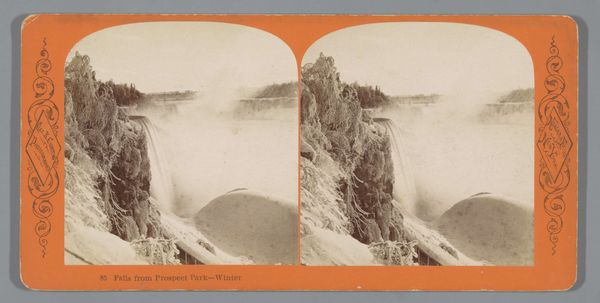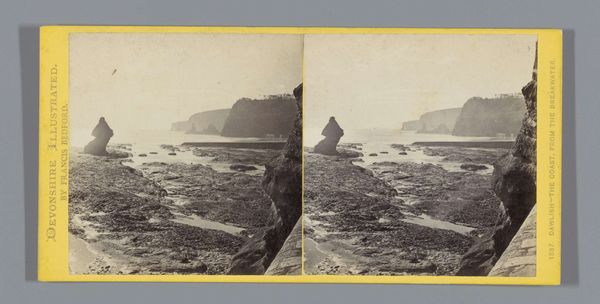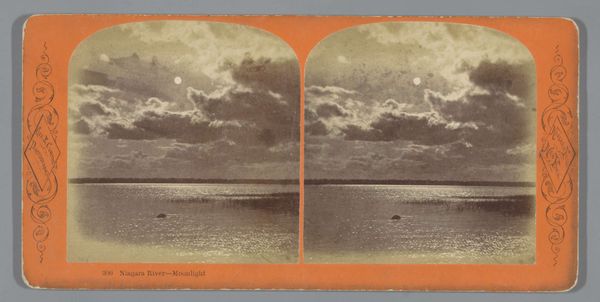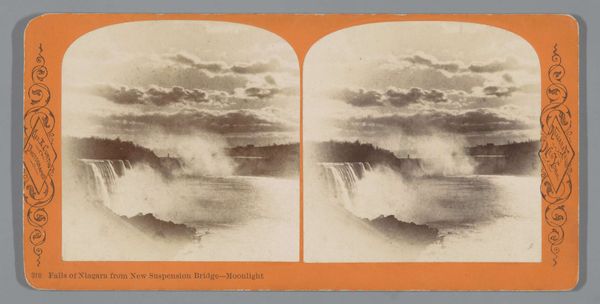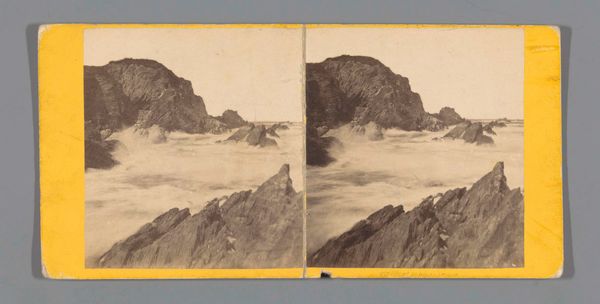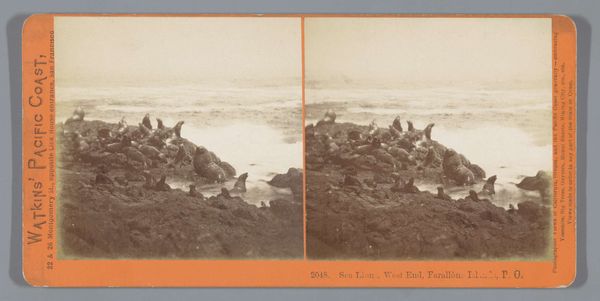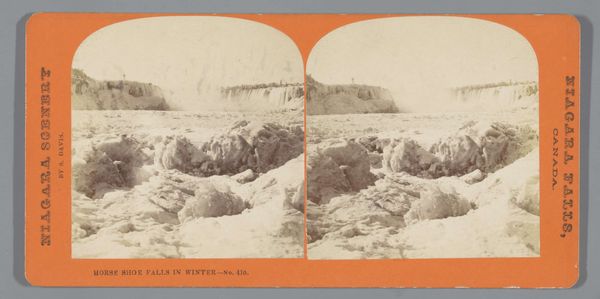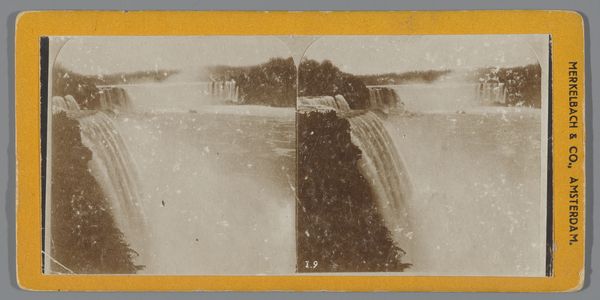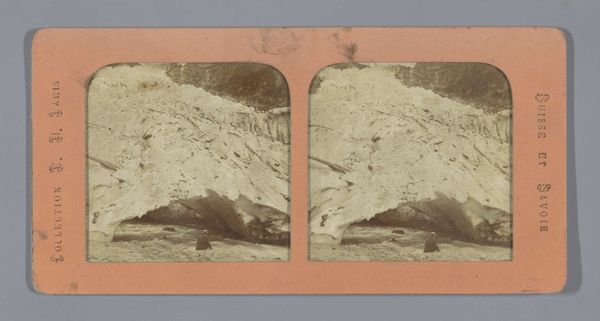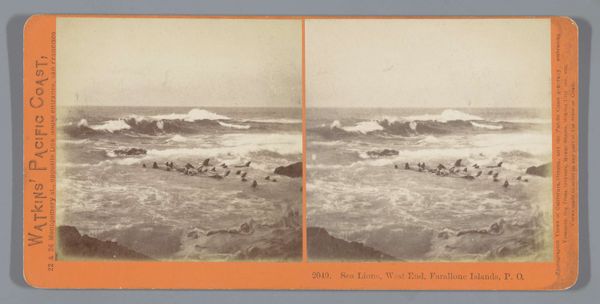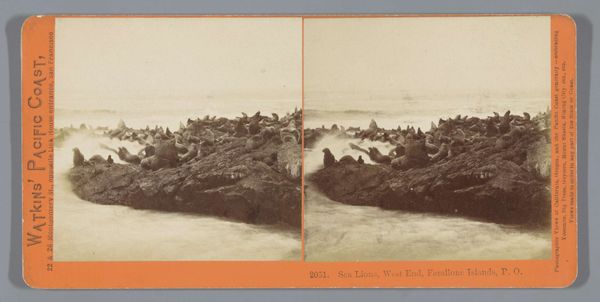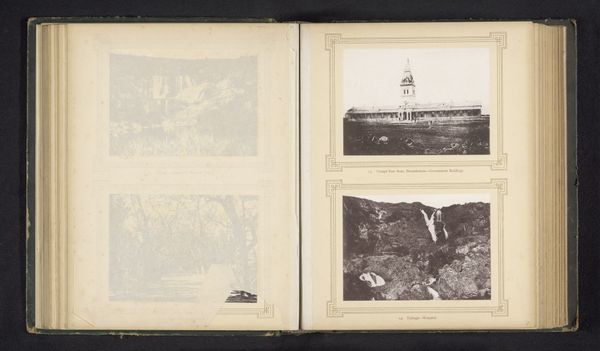
photography, gelatin-silver-print
#
pictorialism
#
landscape
#
photography
#
gelatin-silver-print
Dimensions: height 87 mm, width 176 mm
Copyright: Rijks Museum: Open Domain
Editor: Here we have a gelatin silver print titled "Gezicht op de Niagarawatervallen en Terrapin Tower bij nacht," taken by George E. Curtis sometime between 1866 and 1910. It has a sort of quiet grandeur to it. What strikes you when you look at this image? Curator: This image, presented in a stereo format intended for immersive viewing, offers a potent entry point for considering how landscape photography intersects with concepts of colonialism and the sublime. How do you see this romanticized depiction of nature possibly being connected to the erasure of Indigenous histories and perspectives? Editor: I guess the romantic, "untouched" feel almost…disguises any human presence, certainly any history that was there before. Curator: Exactly. Think about Manifest Destiny during this era, and the role of landscape imagery in promoting the idea of a vast, open, and available land ready for the taking. The sublime nature captured in images like this one can be interpreted as justification for expansion. What specific visual cues give you that sense? Editor: I see it in the vastness, the almost overwhelming scale of the falls dwarfing any potential human element. There's a deliberate attempt to emphasize the raw power of nature, and maybe even frame that as a "right" to be seized or something. Curator: Precisely. And consider also, who had access to the vantage points necessary to produce photographs like this? The act of observation and documentation becomes inherently political. Who benefits from these representations, and whose voices are marginalized or silenced? Editor: So, the romantic appeal becomes a sort of tool? To rewrite or suppress the realities of the time. It gives a whole new perspective to landscape photography! Curator: Indeed. Examining art through a lens of social justice requires us to constantly question and contextualize the narratives presented before us. Editor: I see that so clearly now. Thank you for providing that new context.
Comments
No comments
Be the first to comment and join the conversation on the ultimate creative platform.

